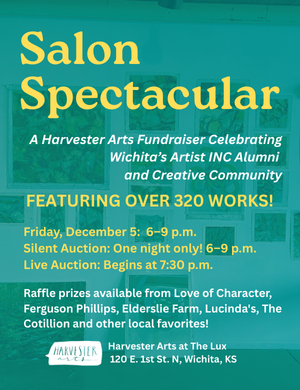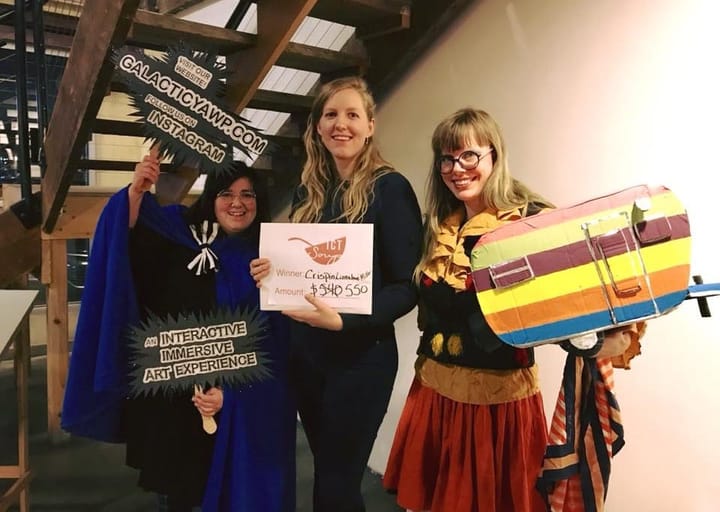Report from the Red Barn Studio Museum artist-in-residence program in Lindsborg, Kansas
Kansas artist-in-residence programs offer creators the opportunity to spend quality time with their craft.
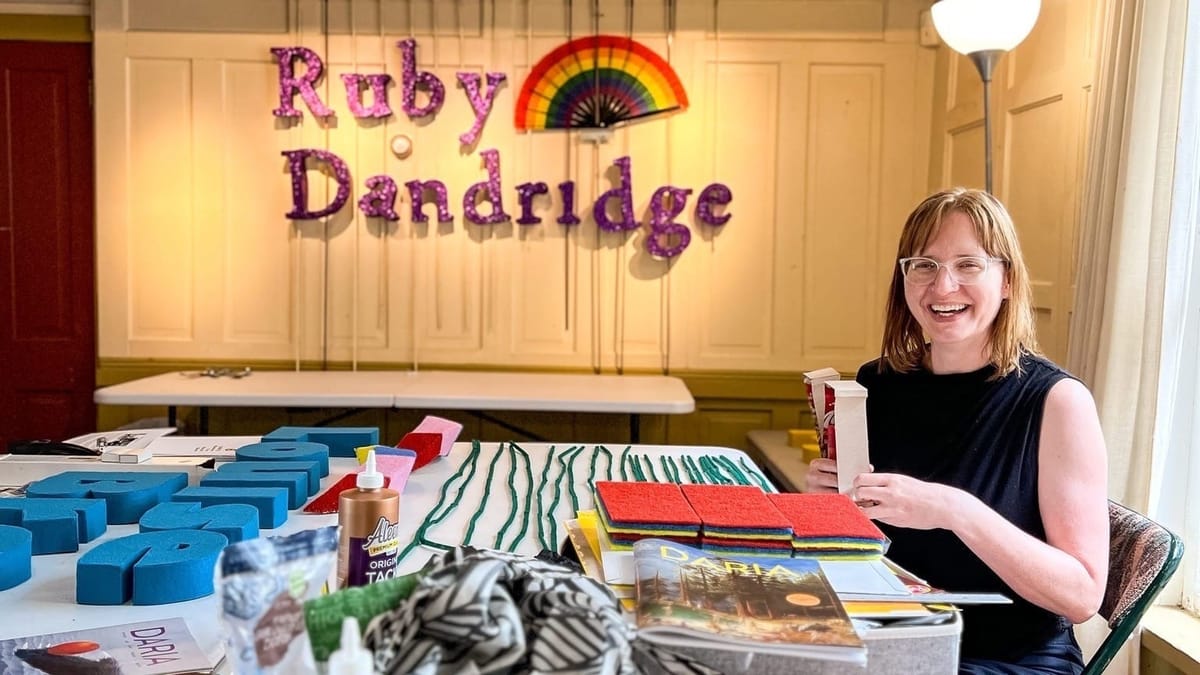
For two weeks in June, I was the artist in residence at the Red Barn Studio Museum — the former home and studio of the artist Lester Raymer (1907-1991). A tour de force and fixture of the Lindsborg art scene for decades, Raymer worked in virtually every medium, including bronze casting, ceramics, metalsmithing, painting, printmaking, quilting, stained glass, toymaking, and woodworking (including elaborate carvings on the handles of rifles!).
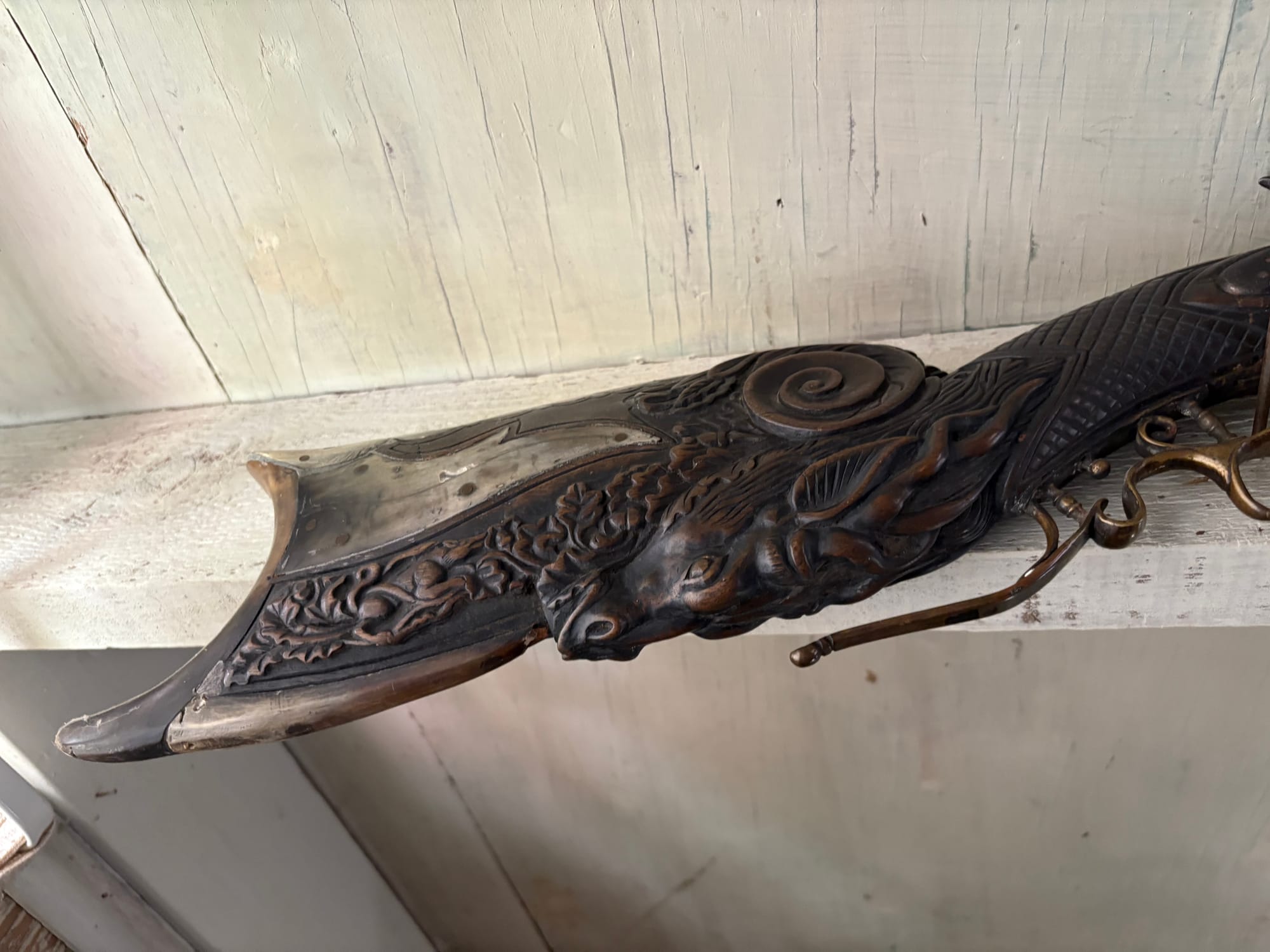
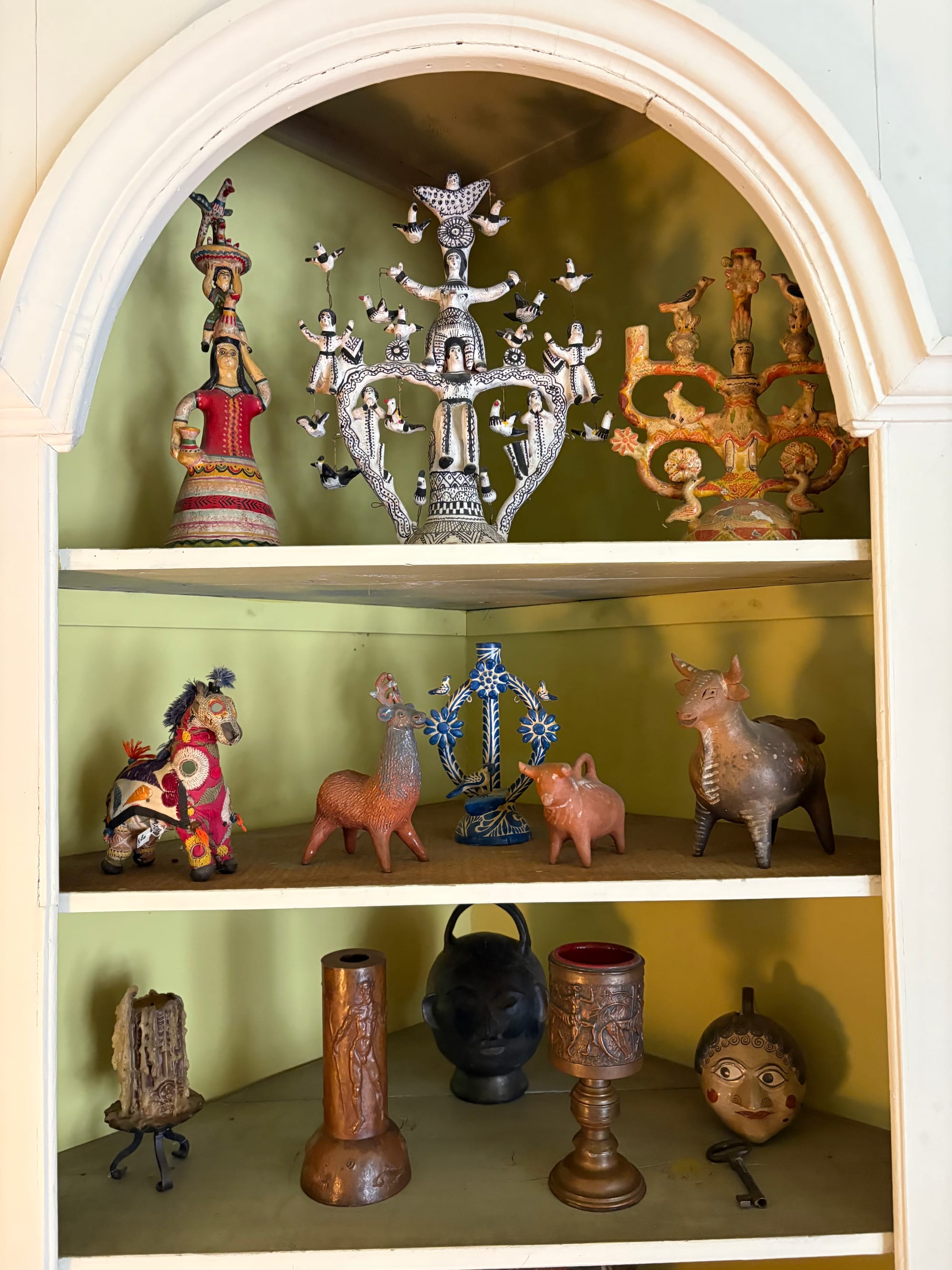
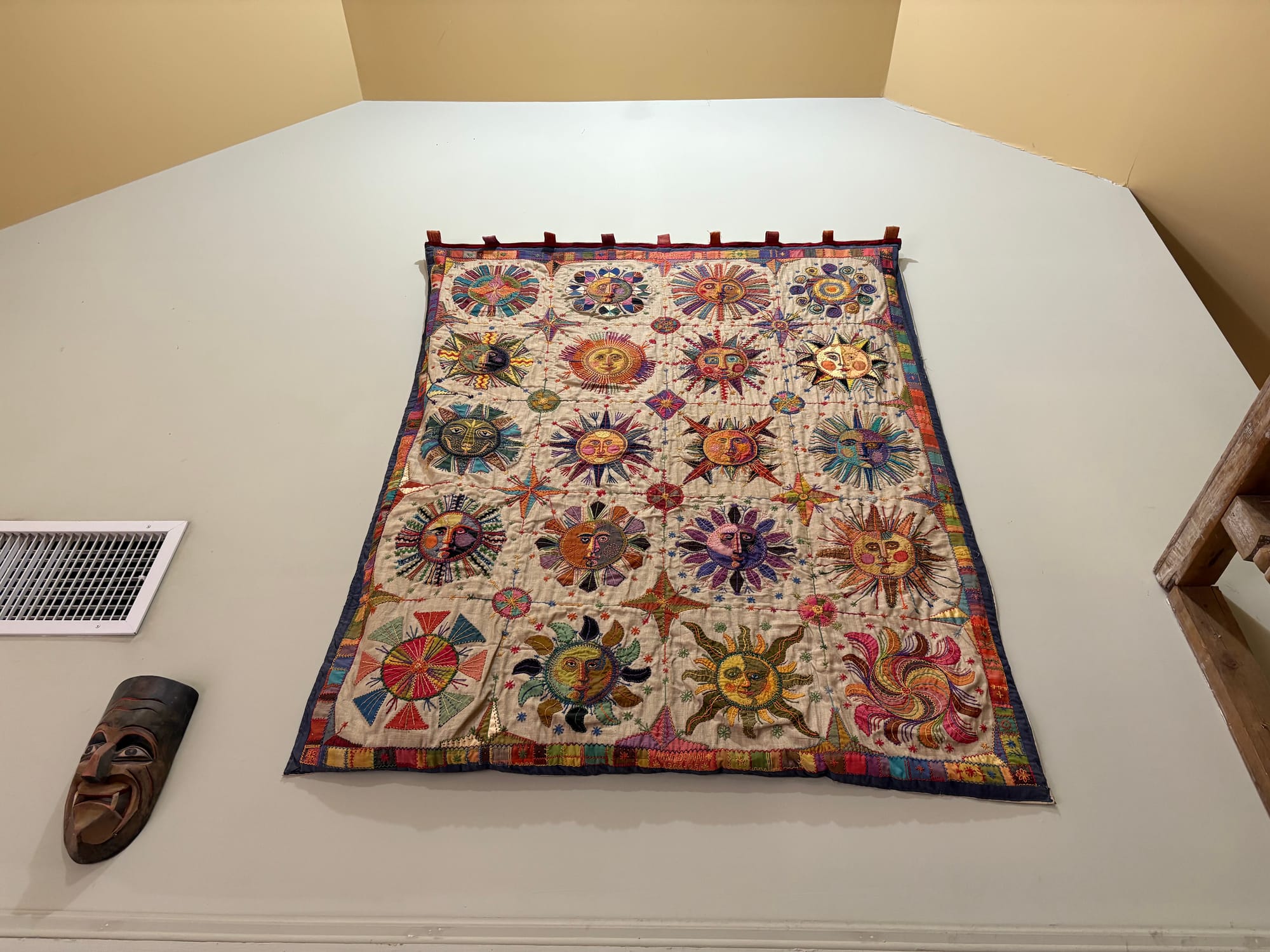
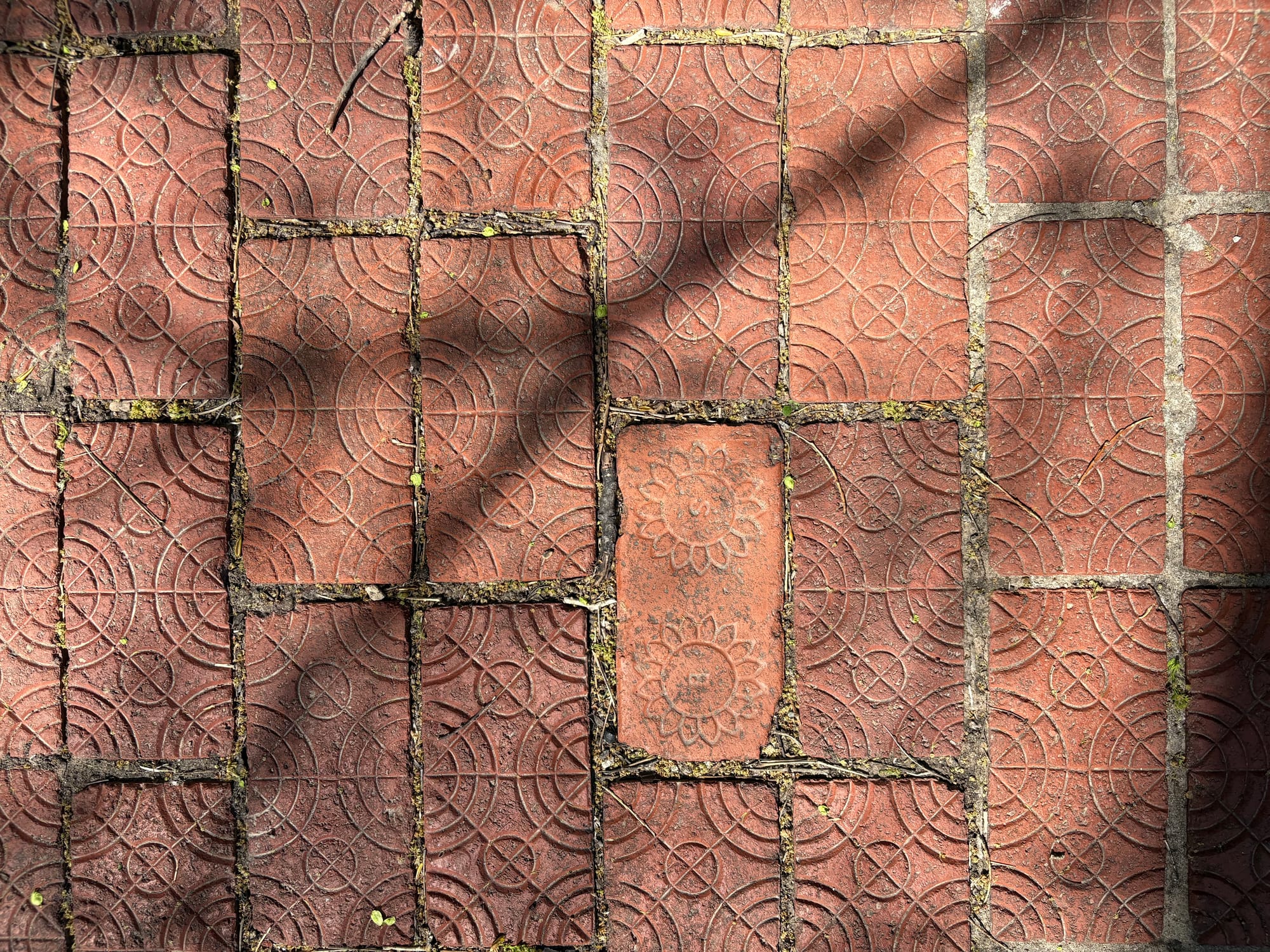
The Red Barn Studio Museum is filled to the brim with Lester Raymer's creations. Works in a variety of mediums, including bronze casting, ceramics, metalsmithing, quilting, toy-making, and woodworking are on display throughout the property. Photos by Genevieve Waller for the SHOUT.
Artists in residence live on site in Raymer’s former home and work in the studio space he created for friends and fellow artists to use when they visited. Surrounded by Raymer’s work in the studio complex, which also serves as the main museum building, artists can draw inspiration from this rich environment while also interacting with visitors who stop by to learn more about Raymer and tour the museum.
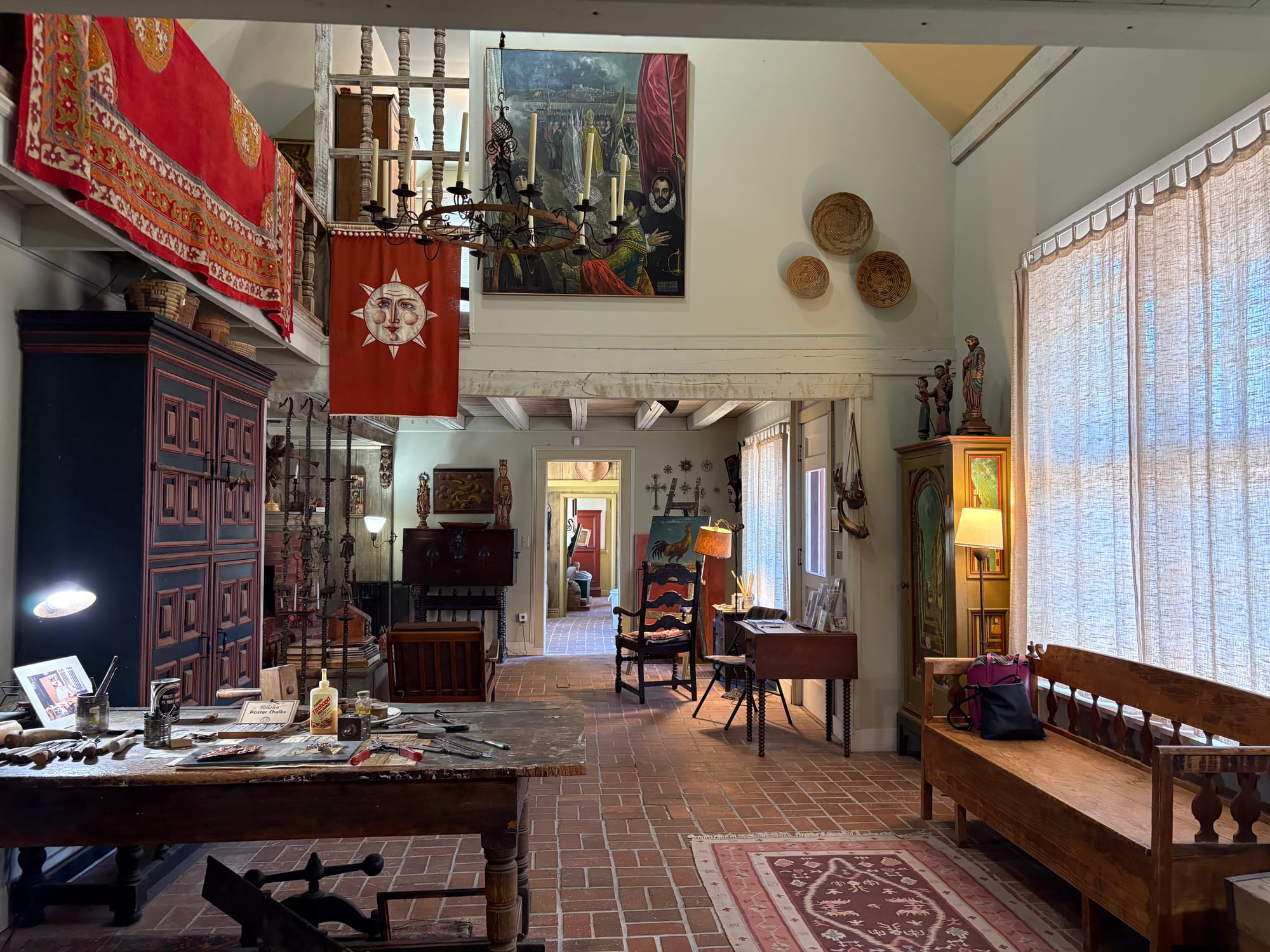
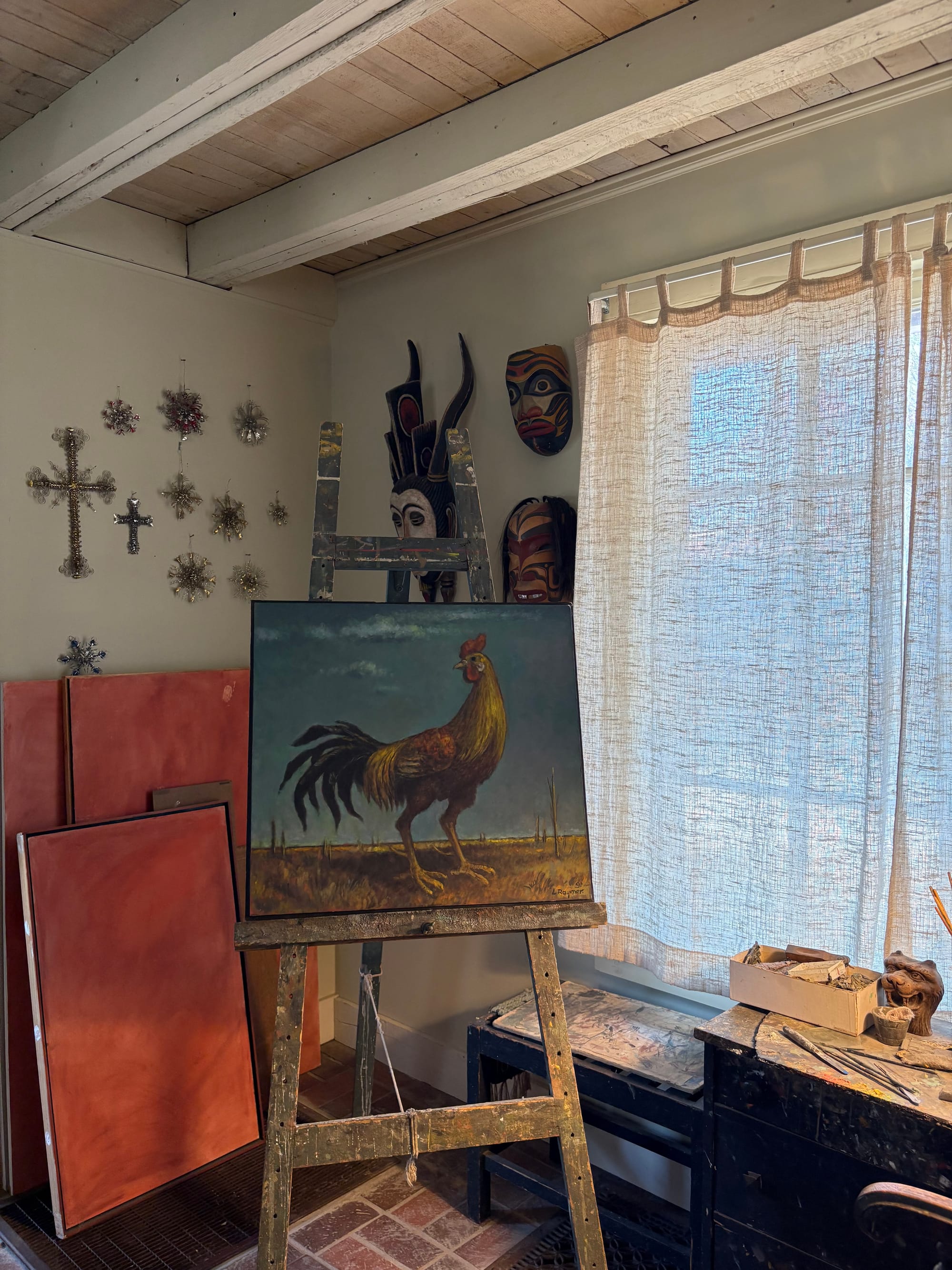
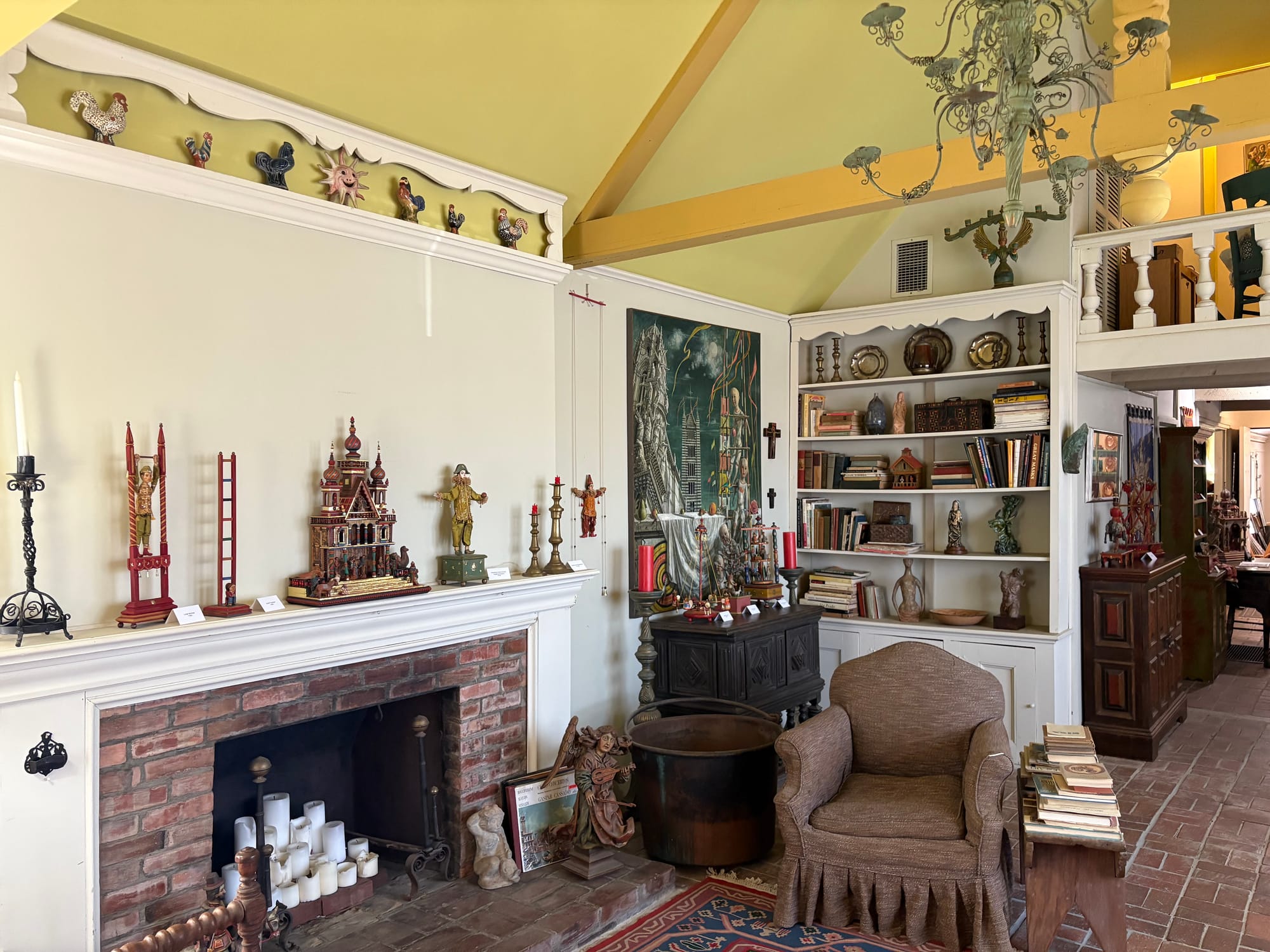
In interior spaces of Raymer's home, intimate nooks contrast with grand, two-story rooms. On the left, Raymer's last painting rests on an easel. Photos by Genevieve Waller for the SHOUT.
Raymer designed the Red Barn Studio and various elements on the property to reflect his own sensibilities, with lots of brick, mosaics, and walls and beams in pleasing shades of green, red, and yellow. Indoors, intimate nooks contrast with grand, two-story rooms. The beautiful outdoor spaces include a private courtyard and fountain. Immersed in this lovely space filled with dozens of Raymer’s impressive works of art, I spent my time as a resident creating a new sculpture in a series celebrating LGBTQ+ Kansans.
Our free email newsletter is like having a friend who always knows what's happening
Get the scoop on Wichita’s arts & culture scene: events, news, artist opportunities, and more. Free, weekly & worth your while.
No spam. Unsubscribe anytime.
Most scholars agree that Lester Raymer was part of the queer community. His relationship with his artist wife Ramona Weddle is well-known, as is his longstanding romance with another artist, Milford Greer. Looking at his work, you can see that his representations of male figures are lovingly homoerotic. In his painting depicting the biblical story of David and Goliath, for instance, Raymer places David’s nearly nude body at center stage, and in the mirrored shield behind him we see a reflection of his uncovered buttocks.
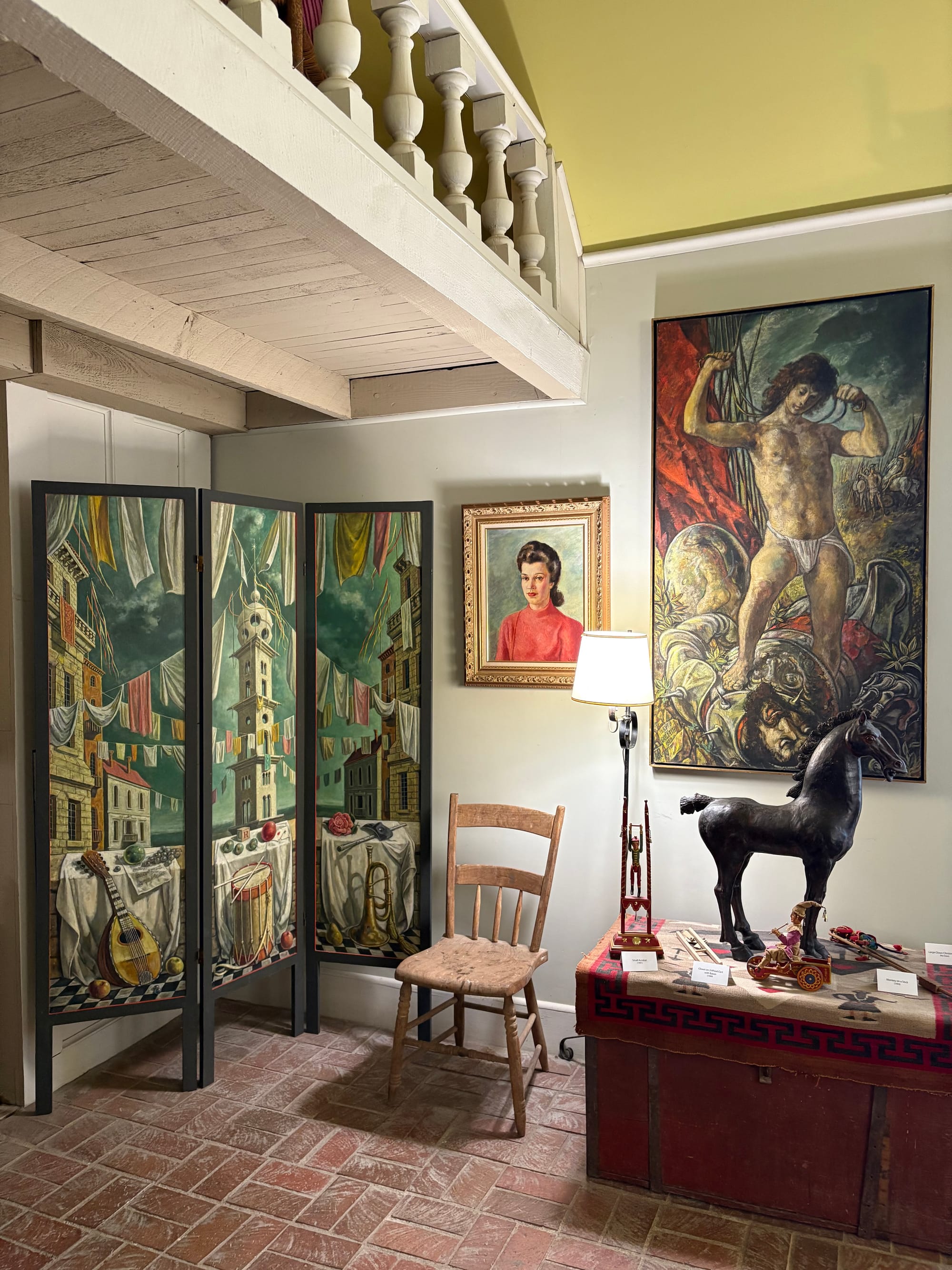
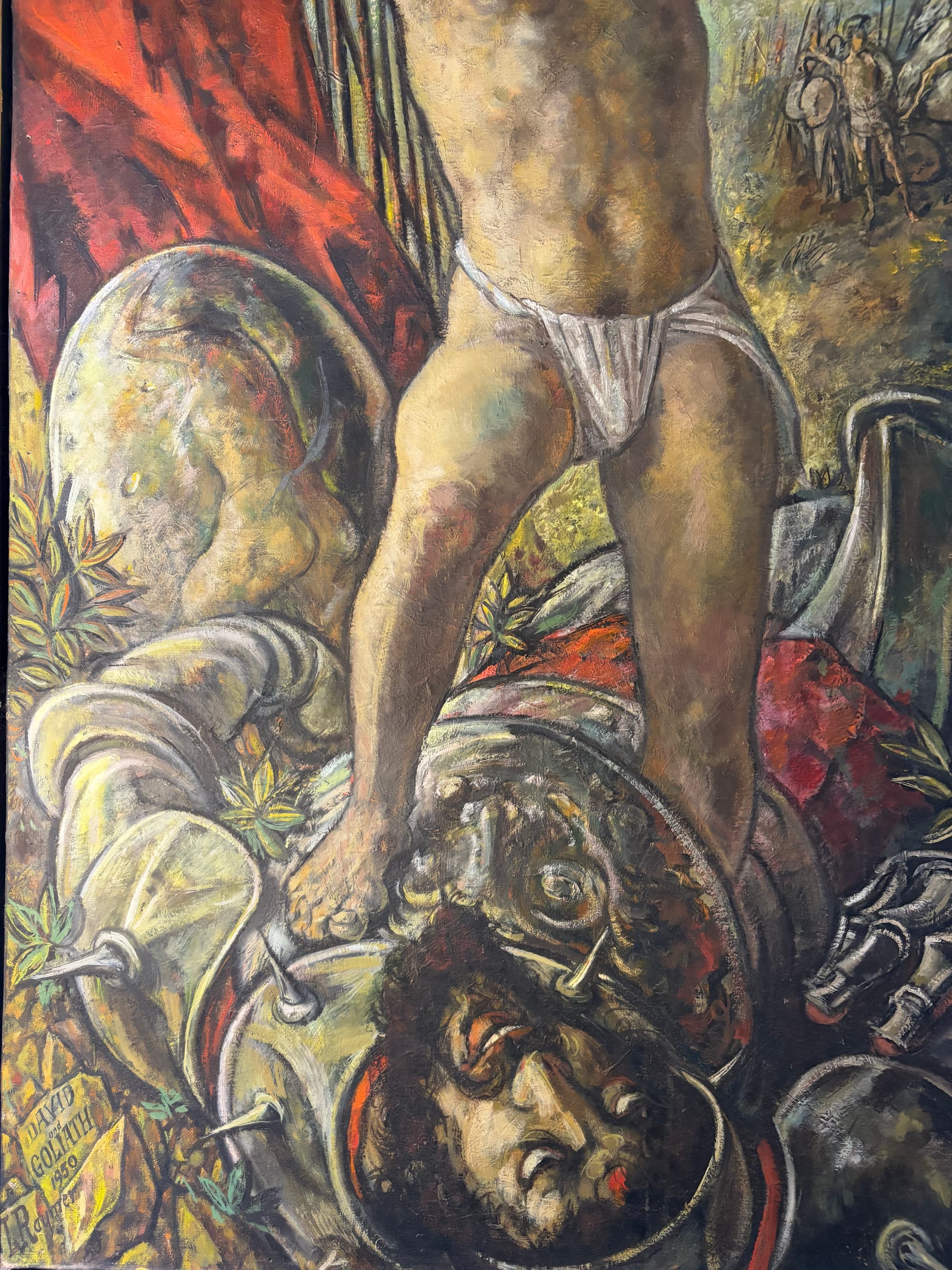
A corner of Raymer's home with several of his works including a portrait of his wife, Ramona Weddle, and a painting of David and Goliath. On the right, a detail of the David and Goliath work pictures a shield cheekily mirroring David. Photos by Genevieve Waller for the SHOUT.
With this knowledge of Raymer’s identity and my residency coinciding with Pride Month, I wanted to use my time in Raymer’s space to celebrate the queer history of Kansas and to educate museum visitors about the important Kansans who are part of the LGBTQ+ story of the state. For example, as you may or may not know, the artist who created the rainbow pride flag was born in Chanute and raised in Parsons, Kansas. Gilbert Baker designed the flag as a symbol of gay pride in 1978. Since then it has become an international symbol for LGBTQ+ people and communities.
My series of sculptures honoring queer Kansans includes one for Gilbert Baker, but also a sculpture for the late transgender activist Stephanie Mott. She founded K-STEP: The Kansas Statewide Transgender Education Program and held conferences and workshops throughout the state educating citizens about transgender people and inclusivity, while also supporting trans Kansans. In my works, (Editor’s note: Mott is one of the Kansans whose stories are collected in the book “No Place Like Home: Lessons in Activism from LGBT Kansas” by C.J. Janovy, whom Shelly Walston recently interviewed.) I want to raise the profile of artists and activists like Baker and Mott by metaphorically putting their names in lights — creating sculptures of their names that sparkle and hopefully make viewers want to know more about them.
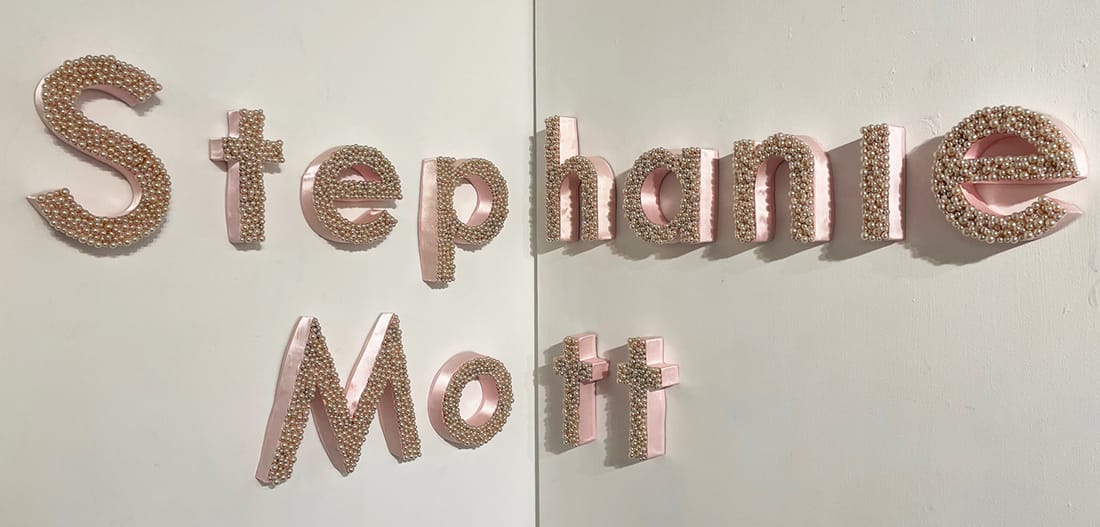
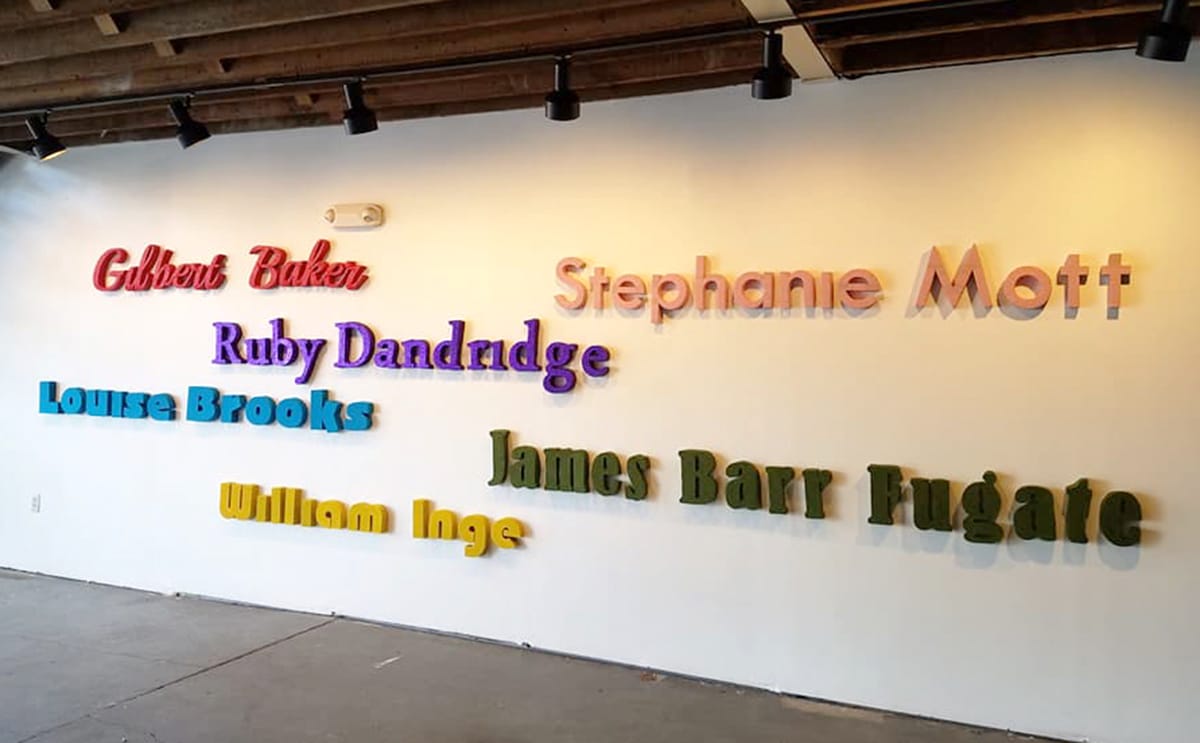
During my time in Lindsborg, I made a sculpture honoring the attorney and activist Wendell Sayers. Born in Nicodemus, Kansas — a historically Black town founded in northwest Kansas after the end of the Civil War — Sayers went on to receive a law degree from Washburn University in Topeka and he became the first Black attorney to work in the Colorado Attorney General’s office in Denver. He was also part of the Homophile Movement in Denver in the 1950s and 1960s, advocating and organizing for gay rights.
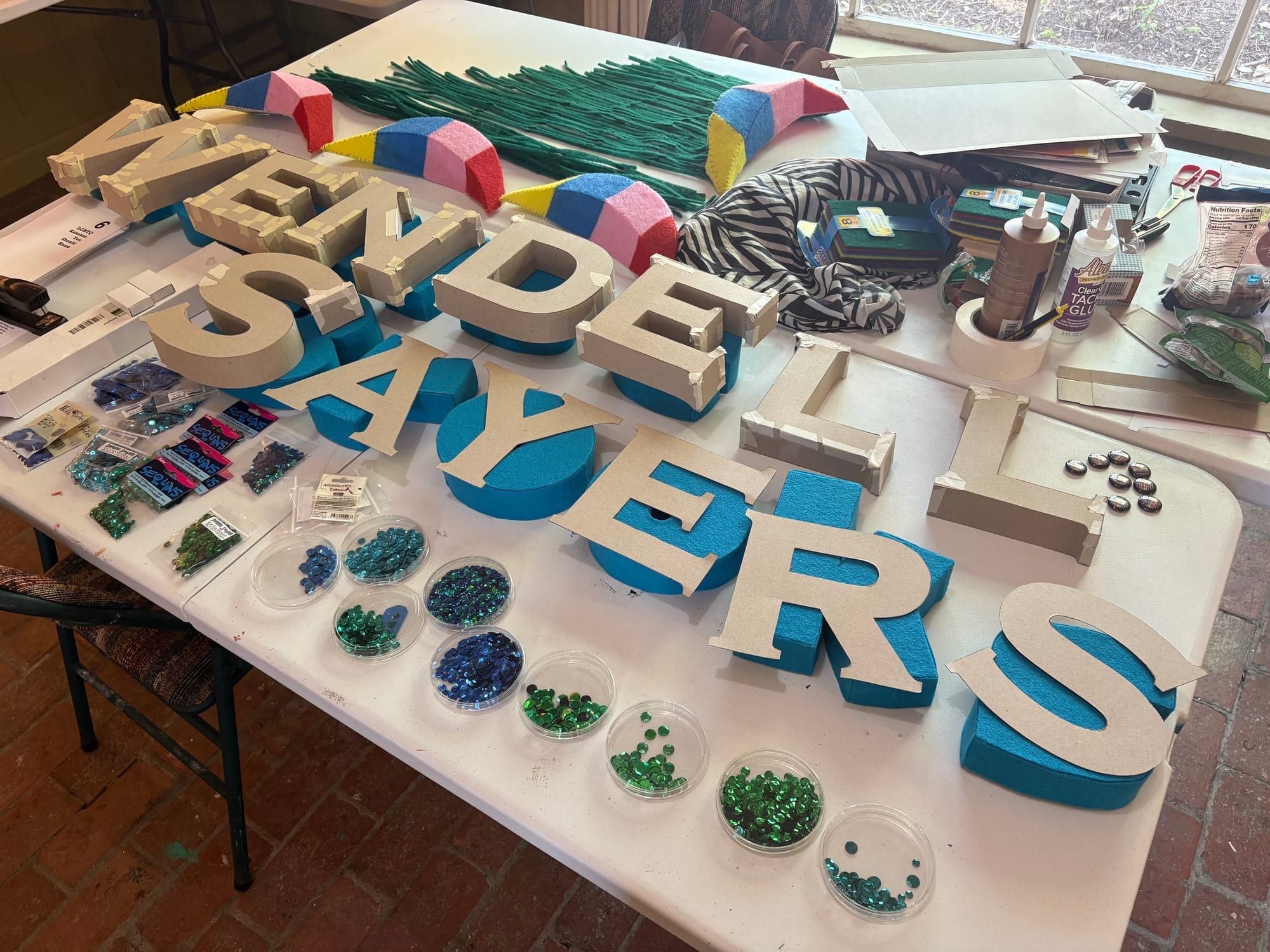
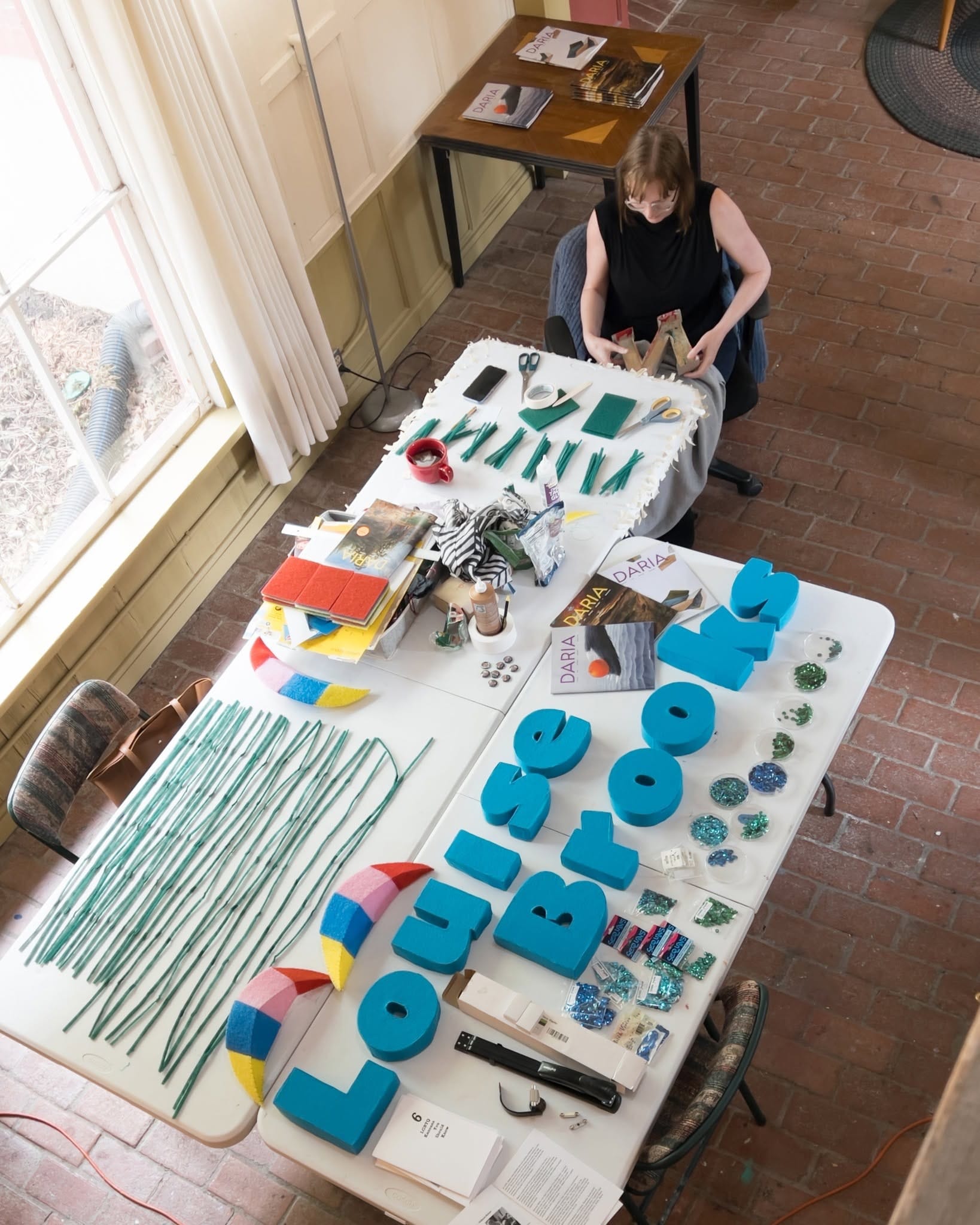
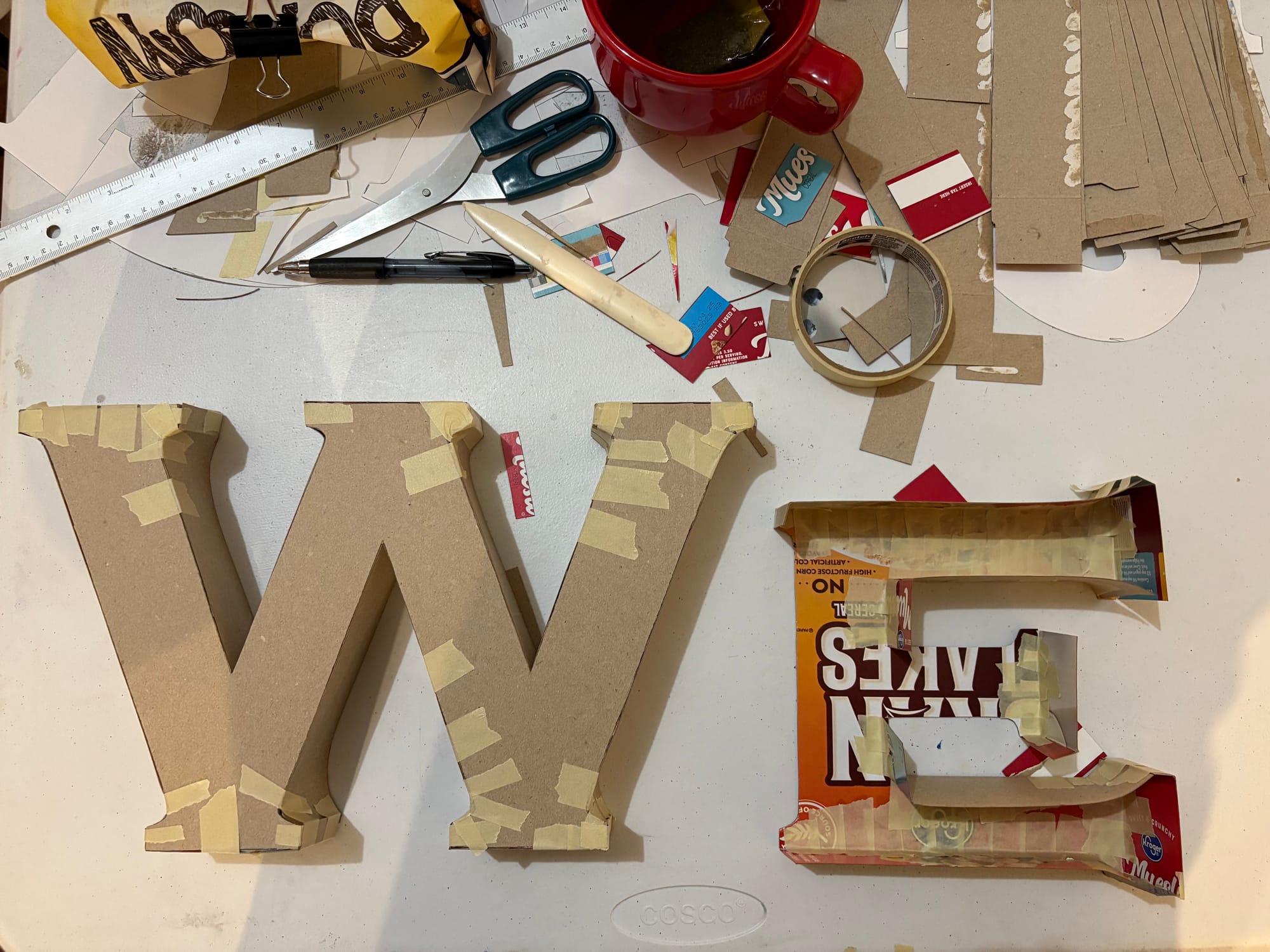
From left: Genevieve Waller meticulously crafts a sculpture honoring Wendell Sayers. Photo courtesy of the Red Barn Studio Museum. Detail of Waller's work gives insight to her sculpture-making process. Photo by Genevieve Waller for the SHOUT.
Having dedicated time and space for one’s art practice is such a luxury for artists. Residencies allow us to make major progress on projects without the distractions of home and the usual daily grind. They also spark fresh ideas. By meeting new people and experiencing the culture of another place, we can expand our thinking, learn from our differences, and appreciate diversity in a new way.
The Red Barn Studio Museum program is a wonderful case in point, and it is unusual in its mission to give many people their first opportunity to be an artist in residence. If you are looking for an artist residency in Kansas, their program is incredibly well-run and supportive (and their application deadline is rolling).
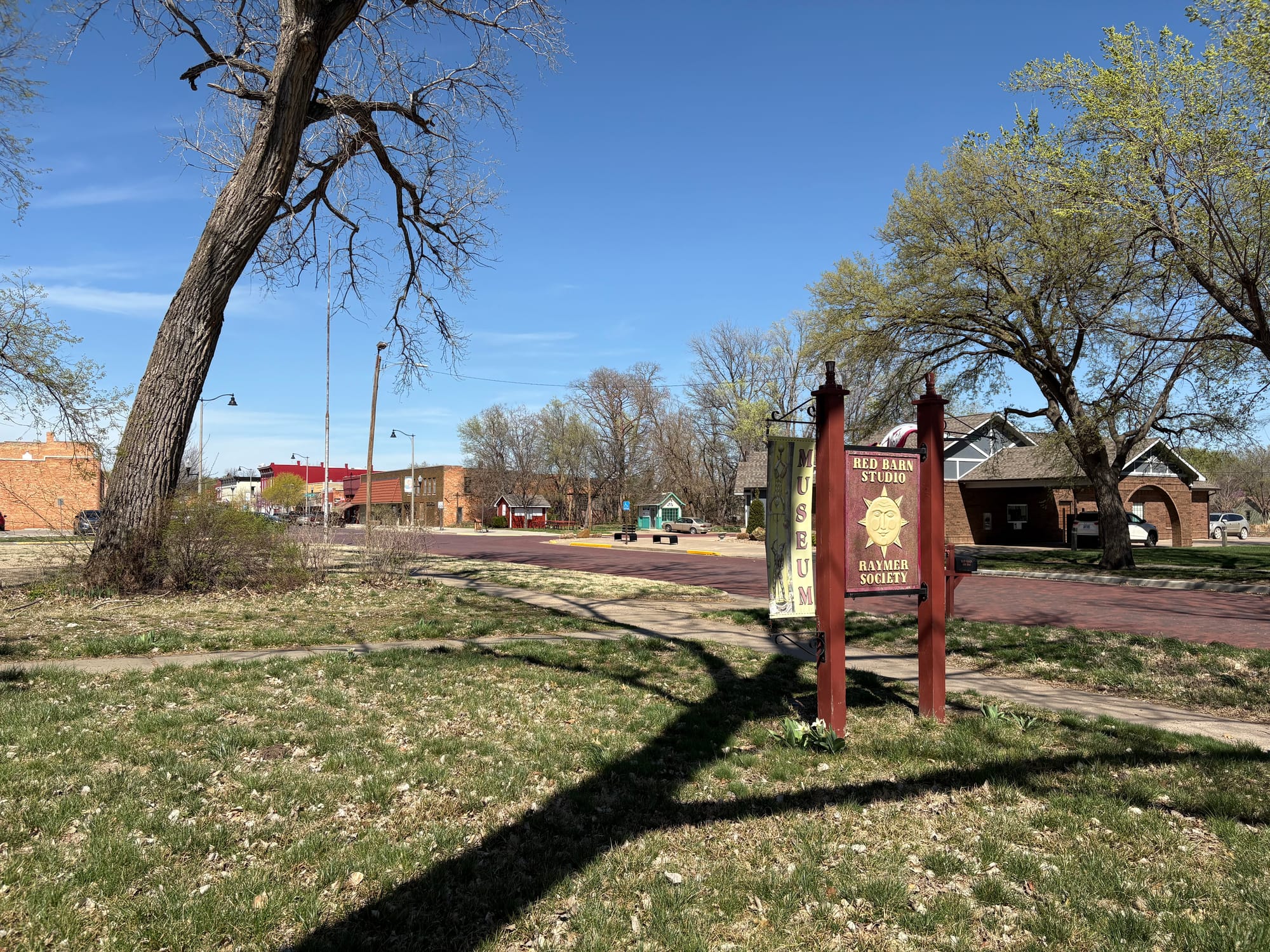
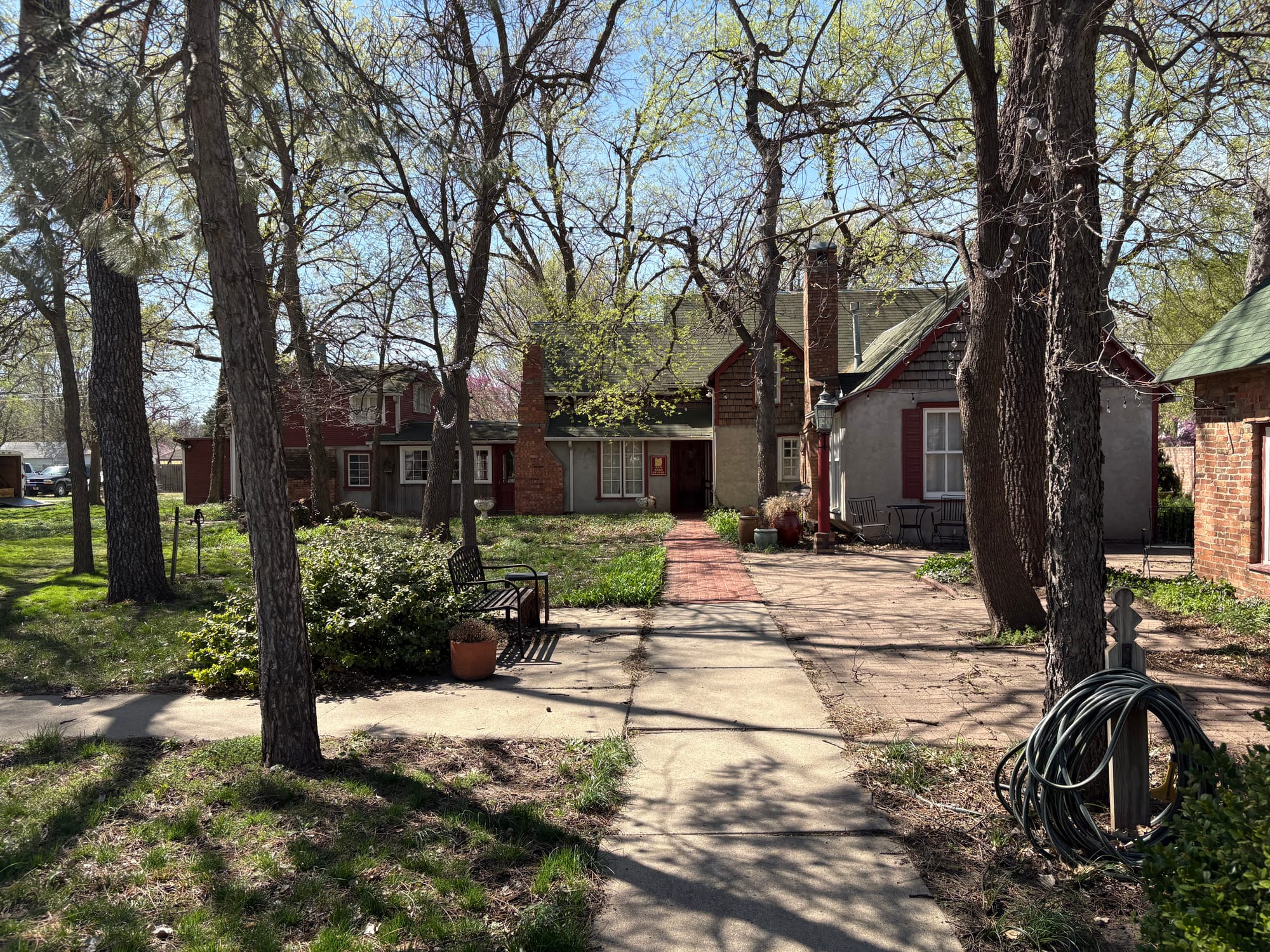
The sign for the Red Barn Studio Museum and an exterior view of the main building. Photos by Genevieve Waller for the SHOUT.
There are many other residencies in the state you might consider as well. All are free unless otherwise noted:
The M.T. Liggett Art Environment/5.4.7. Arts Center Residency in Mullinville, Kansas. Its next application deadline is August 31.
Mother’s Milk Residency in Newton, Kansas. This program charges a weekly fee of $325, though some financial aid is available. The deadline is in February.
The Tallgrass Artist Residency in Matfield Green, Kansas, is associated with the Tallgrass Prairie National Preserve. The deadline is in October.
The Volland Residency in Alma, Kansas. The deadline is usually in December.
Genevieve Waller (she/her) is an artist, curator, and writer who was born in the heyday of disco and grew up in Wichita. She currently splits her time between Wichita and Denver, where she is the founder and editor of the art magazine DARIA: Denver Art Review, Inquiry, and Analysis. She is also a long-time college radio DJ, most recently on Radio 1190 in Boulder, Colorado.
Support Kansas arts writing
The SHOUT is a Wichita-based independent newsroom focused on artists living and working in Kansas. We're partly supported by the generosity of our readers, and every dollar we receive goes directly into the pocket of a contributing writer, editor, or photographer. Click here to support our work with a tax-deductible donation.
❋ Derby man has the kind of voice that turns heads — and chairs
❋ Socializing while sober: how some Wichitans are cultivating alcohol-free communities
❋ As a small creative business closes, the owner mourns
❋ Painting through it: Autumn Noire on 20 years of making art
❋ How a guy from Wichita resurrected 'Dawn of the Dead'
❋ Bygone Friends University museum housed curious collections

